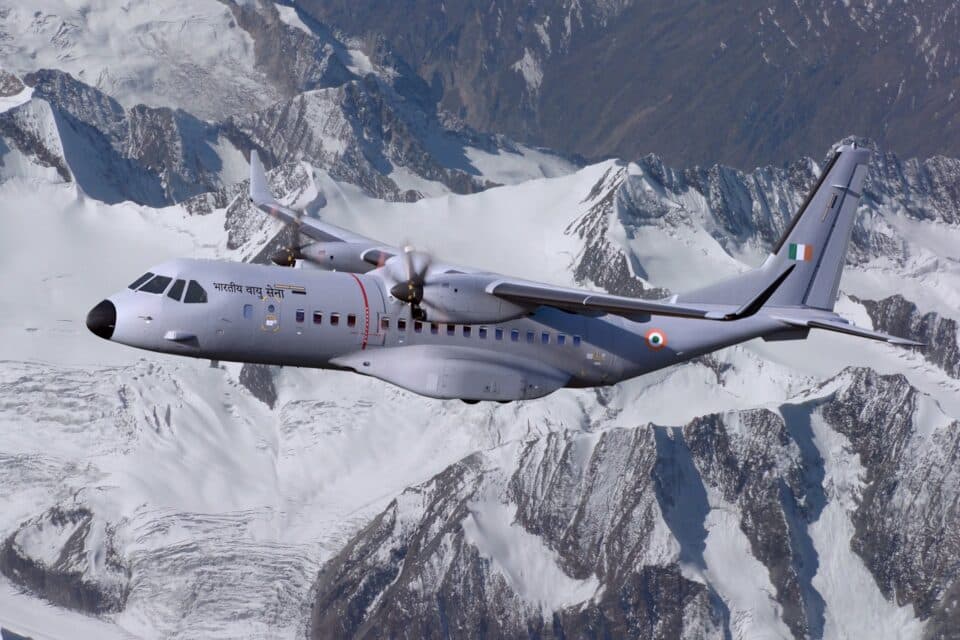Aerospace
Tata will build Airbus C295 planes in Gujarat. Indian PM Modi will inaugurate a plant this month.
where the aircraft will be produced locally, and will soon be laid by Tata Defence

One of India’s most recognizable brands is TATA. Air India and Vistara are two of the many products it has ventured in, and they are well-known in the aviation sector. but it also serves as a monitor in the aerospace sector. It is currently a significant supplier of aircraft goods. Airbus is now considering constructing its own production facility with the joint venture TATA group to create defense planes. This scheme was approved by the Indian government as part of the Make in India initiative.
The foundation stone for the production facility at Vadodara, where the aircraft will be produced locally, will soon be laid by Tata Defence, which secured the contract for the supply of C-295 Transporter aircraft to the Indian Air Force with its defense partner Airbus. As part of the Rs 22000 crore deal with India, Tata will produce 40 of the C-295 Transport aircraft in this planned new factory while 16 would be produced in an existing plant in Spain.
Airbus will deliver the first lot of C-295 from 2025 onwards that are manufactured in Spain and the new manufacturing plant in Vadodara will be up and running by 2025 as per the agreed terms and conditions of the contract. C-295 will be replacing aging Avro Transport aircraft and might even replace An-32 Transport aircraft with more orders at a later stage.
According to the agreed-upon terms and conditions of the contract, Airbus will begin delivering the first batch of C-295s made in Spain starting in 2025, and the new manufacturing facility in Vadodara will be operational by 2025. The C-295 will replace outdated Avro Transport aircraft and, depending on future orders, could possibly replace An-32 Transport aircraft.
PM Narendra Modi says Gujarat to soon get aeroplane manufacturing plant(Opens in a new browser tab)
A new generation tactical airlifter in the light and medium categories is the Airbus C295. With its fully integrated tactical system, Airborne Early Warning version, and defence of Armed / Ground ISR, this aircraft serves a variety of tasks. complete electromagnetic and communication interceptions. as well as VIP transportation and medical evacs.
In its class, the C295 has grown to be the most dependable airlifter, serving either as a sole mode of transportation or as a flexible and effective auxiliary to heavy airlifters and transport helicopters. It is employed in conflict areas including Afghanistan, Iraq, and Chad.
10 things we must know about Vistara Airlines(Opens in a new browser tab)
The C-295 was officially under development by the Spanish aerospace manufacturer CASA beginning in November 1996. Airbus is a participant in this initiative and has made numerous improvements to its products to meet the needs of the defence industry.

Aerospace
Boeing Transfers Rocket Stage to NASA, Paving Way for Human Moon Mission

Boeing has achieved a significant milestone by providing NASA with the second core stage of the Space Launch System (SLS) rocket.
This crucial component, crafted at NASA’s Michoud Assembly Facility (MAF), is set to propel the Artemis II crew into lunar orbit, marking humanity’s return to deep space after a 50-year hiatus.
The monumental Boeing-built rocket stage, the largest element of the Artemis II mission, will embark on a journey aboard the Pegasus barge, traveling 900 miles to NASA’s Kennedy Space Center.
Comparison of two legendary aircraft B777x vs B747 aircraft:Click here
Upon arrival, it will be meticulously integrated with other essential Artemis II components, including the upper stage, solid rocket boosters, and NASA’s Orion spacecraft within the iconic Vehicle Assembly Building. This intricate integration process is a vital step toward the eagerly anticipated Artemis II launch, slated for 2025.
“Boeing-built products helped land humankind on the moon in 1969, and we’re proud to continue that legacy through the Artemis generation,” remarked Dave Dutcher, vice president and program manager for Boeing’s SLS program. “Together, with NASA and our industry partners and suppliers, we are building the world’s most capable rocket and paving the way to deep space through America’s rocket factory in New Orleans.”
NASA, Lockheed Martin Reveal X-59 Quiet Supersonic Aircraft:Click here
The delivery of Core Stage 2 marks a significant achievement in the evolution of the SLS rocket. Towering over 200 feet and powered by four RS-25 engines, this core stage, coupled with two solid-fueled booster rockets, will generate a staggering 8.8 million pounds of thrust. This immense power is crucial to launching Artemis II and future missions into the vast expanse of space.
The SLS rocket stands unparalleled in its capability to transport both crew and substantial cargo to the moon and beyond in a single launch. Its extraordinary capacity will facilitate the delivery of human-rated spacecraft, habitats, and scientific missions to destinations including the moon and Mars, ushering in a new era of space exploration.
-

 Travel1 week ago
Travel1 week agoAir India to Expand US Operations with Three New Routes After a Decade
-

 Travel2 weeks ago
Travel2 weeks agoWhy We Should Avoid These Stamps in a Passport
-

 Airlines1 month ago
Airlines1 month agoInvestigations Reveal Fake Chinese Titanium in Boeing and Airbus Jets
-

 Tech4 weeks ago
Tech4 weeks agoChina’s CATL Plans 1,800-Mile Electric Plane Launch by 2027
-

 Airport3 days ago
Airport3 days agoTop 10 Largest Airports in the World by Size
-

 Aerospace4 weeks ago
Aerospace4 weeks agoChina’s Fighter Jets Turn Wings into Autonomous Drones
-

 Airlines4 days ago
Airlines4 days agoAir India Rolls Out A350s for Delhi-New York JFK and Newark Routes
-

 Defence3 weeks ago
Defence3 weeks agoBoeing Enhances Chinook with New Engines and Block II Upgrades at $96 Million







